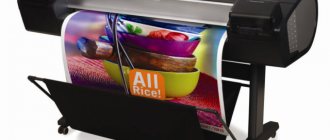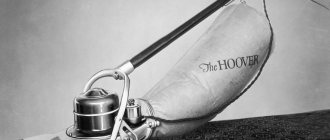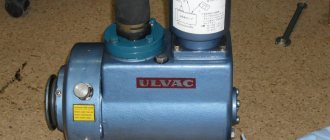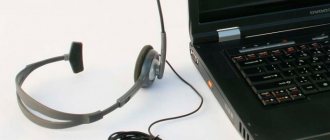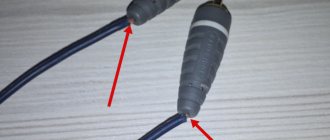We have long been accustomed to the fact that headphones use speakers to emit sound and often do not pay attention to the fact that there are other types of emitters.
In English, the word "driver" means "emitter". Due to the dominant use of dynamic drivers, many equate the words “driver” and “speaker,” which is as smart as saying that “fuel” and “gasoline” are the same thing. In addition to dynamic emitters, there are alternatives: reinforcement, electrostatic, iso- and ortho-dynamic emitters. Armature drivers have become widespread relatively recently and already occupy almost an equal number of models with dynamic headphones in the middle and upper sector of in-ear headphones. The reinforcement emitter in the original is called “balanced armature” and does not have an exact translation. The following names for headphones with this emitter are usually used:
- Armature headphones
- Balanced Armature Headphones
- Headphones with balanced armature
- Balanced fittings
And many other phrases with the words “reinforcement”, “anchor”, “balanced/balanced”. The design of the operation of the reinforcement radiator is so far from dynamic and so little variation among reinforcement radiators that any name is suitable.
The reinforcement emitter looks like a rectangular oblong bottle, where the sound is emitted from the neck. Thus, the radiation axis coincides with the main length, and the width and height of the emitter are relatively small. Thanks to this shape, this type of emitter has become widespread in in-ear hearing aids, where a conventional dynamic emitter cannot be placed in a narrow ear canal.
Marketers from different companies like to compare the dimensions of an armature and dynamic driver, showing that the armature driver is much smaller and plays no worse.
But the laws of physics cannot be fooled, and all the parameters that depend on the dimensions are also valid for an armature driver: small dimensions limit the bass and overload capacity of the driver.
In order for armature headphones to be as good as dynamic headphones in terms of overload capacity in the low-frequency region, it is necessary either to use an armature emitter with comparable dimensions or to use several emitters simultaneously.
Like any driver, armature or dynamic, the type itself is not synonymous with defining quality or mandatory characteristics. There are budget models with mediocre sound, and there are expensive and very expensive ones with high sound quality. It is completely pointless to compare inexpensive armature headphones with expensive dynamic ones and vice versa. Preferences will often be towards an expensive model, regardless of the type of emitter.
Structurally, with the same membrane area for the reinforcement and dynamic emitter, the membrane stroke is greater for the dynamic one. For this reason, dynamic drivers have a higher overload capacity, which is expressed in the absence of crackling sound at high volumes. When the task is to obtain the same bass as a dynamic radiator using a reinforced one, a large total area from the reinforced radiator is required (compensating for the small stroke of the membrane).
An additional disadvantage of many armature drivers is their narrow neck, which adds distortion in the low-frequency region due to the inability to “pump” the required volume of air. The neck is necessary for attaching the sound guide to hearing aids. Probably for this reason, the reinforcement emitters of the SONY company (which does not produce its emitters for hearing aids) do not have a neck.
Development of armature headphones
In the history of the origins of armature headphones, Jerry Harvey played the most prominent role.
At that time, reinforcement emitters were used primarily in hearing aids. If the hearing impaired were only interested in the mid-frequency range (to hear the speech of others) and high volume, then musicians and audiophiles needed a wide frequency range, high overload capacity and the highest possible sound quality. This required a completely different approach.
In 1995, Jerry Harvey created the first custom monitors for musicians, laying the foundation for the development of multi-driver models. Custom monitors were an analogue of a hearing aid with high noise insulation for performing on stage. The case of custom headphones (as well as hearing aids) is made individually according to an ear impression, which ensures a secure fit and the best noise insulation. For musicians, custom monitors are called personal ear monitoring systems.
The use of several emitters made it possible to obtain high sound quality and move away from the level of “hearing aids”. Gradually, successful custom models migrated to universal headphones and are widely used today.
A little earlier, in 1991, Etymoic introduced the ER-4 model (still in high demand among single-driver models). However, the single-driver ER-4 is primarily intended for audiophiles.
Among audiophiles there are many adherents of both single-driver models (no filters and, accordingly, less phase distortion) and multi-driver models (more phase distortion due to filters, but with an advantage in some other parameter: overload capacity, deep raised bass, etc. .P.).
10th place
MEElectronics A151P. These entry-level single-driver headphones have it all. The fit is comfortable even for long-term wear, and the sound is quite decent for the money.
To tell you the truth, they have no competitors in terms of sound under $100. Neatly defined, articulate bass. Refined and detailed mids. And the high-frequency spectrum is slightly accentuated on the vocal range. All this together gives a neutral, slightly academic sound. The headphones are omnivorous and are equally suitable for listening to almost any genre.
However, despite the outstanding “vocal abilities” and very high build quality, the A151P has one fatal flaw. This is their cable. Or rather its insulation/braid. Most of you, I'm sure, are familiar with Koss Porta Pro and know very well what happens to their cable in winter. Yes! It tans and becomes brittle very quickly. Our hero has the same disease. It is this fact that prevents this wonderful headset from rising above 10th place. But if you're looking to spend a little over $50 on a full-featured armature headset, then the A151P is your choice!
Many drivers and sound quality
Lately, manufacturers have been trying to fit as many reinforcement emitters into an earphone as possible, hinting that the more emitters, the higher the quality. Today, among mass products, the number of drivers reaches 6 pcs. In non-mass and Custom headphones, the number of drivers can reach 12 or more (for example, JH Audio Layla).
Custom headphones with “only” 8 emitters
A large number of emitters does not always improve quality and creates problems with the dimensions of the final headphones, which limits the mass production of headphones with more than 3 emitters. In most cases, with comparable dimensions to a three-driver model, a 6-driver model simply uses smaller armature drivers. For example, the Westone W60 uses 6 emitters, but there are three bands for playback, and two identical emitters are used for each band. The cost with this approach increases not at all in proportion to the quality.
When it comes to Custom models, the ear impression often determines the maximum number of emitters that can be used and which headphone models are automatically excluded.
What is the real use of models with a huge number of drivers?
In concert monitors, due to the large number of emitters, they try to increase the sensitivity of the headphones, which in turn provides loud sound even from weak sources (you never know what kind of equipment you will have to work with on stage).
Usually, if an ordinary user takes concert monitors, he often begins to complain about the good audibility of background noise from the source (for example, a telephone). Most companies developing multi-driver models are focused on musicians, and for this reason you need to be picky when choosing multi-driver headphones - the result does not often coincide with expectations. Most concert monitors are designed to be used in noisy environments and will be perceived by the deaf in less noisy environments. In this case, the transition from traditional models with three emitters does not contribute to the transition to a new level of quality, but only empties your wallet.
For audiophiles, it is necessary to configure the emitters so that they operate in a lightweight mode with a low level of distortion at normal headphone sensitivity.
In addition to the quantity and quality of emitters, the sound is greatly influenced by filters (crossovers), which divide the sound stream into separate frequency ranges. Due to the inability to use inductors and large capacitors, crossover and selection of emitters is a very expensive part of the development and sometimes affects the final quality more than the quality of the emitters individually. Headphones with a large number of emitters and a low price (even if it seems adequate for the total price of components) can be significantly inferior to famous models with a seemingly simpler element base.
As for the choice between Custom and regular headphones with comparable components from the same manufacturer, a custom case usually costs between $200 and $500.
Round reinforcement
A separate type of reinforcement emitters is round reinforcement, known to many by the name of the first successful Siren Armature series. The round shape follows the dynamic drivers and competes with them only due to the quality or character of the sound. The main advantage is higher sensitivity and the absence of a neck. Today, with round fittings you can find mainly high-end single-driver models (such as Grado GR8 and GR10). In most cases, headphones with round fittings demonstrate neutral and smooth sound with high detail. Interestingly, Grado GR10 is positioned higher than GR8, although the class of headphones is the same and the models differ in tonal balance, GR8 have a “darker” sound, and GR10 has a “lighter” sound.
If previously single-driver headphones with broadband armature drivers were de facto standard quality for many (Etymoic ER-4, Klipsh X10, etc.), then headphones with round armatures have quite confidently supplanted the leading positions.
Models with inferior radiators of round fittings have not taken root on the market (S-Jays, Fischer Audio SBA-1), because there was no obvious advantage over a traditional balanced armature or speaker. The application for the use of “Siren Armature” as a guarantor of quality did not cause delight among consumers, because there were inflated expectations among different groups. The headphones could not compete with the reinforced Etymoic ER-4 and Klipsh X10 in terms of detail, or with the dynamic models in terms of quality.
Appearance
The model is sold in red, blue and black versions. We got the second one.
From the FA7 reinforcement predecessor, they took bowls printed on a 3D printer from medical epoxy resin. This is an external nuance that is not available to headphones with dynamic drivers. Here, the body of each “ear” is interesting to just look at: under the translucent material you can see the crossover board, the emitters and the sound guide tubes coming from them. On the front panel of the cases there is a ribbed and iridescent 3D pattern. It is applied under a layer of resin, so the surface remains smooth.
Serious headphones must be durable, so the cable here is replaceable. It is connected to cases using MMCX connectors. Removing the earphone is quite simple, but it will not accidentally fall out.
If the design of the FA7 cases is borrowed from the previous FA1 model, then the cable here is the same as that of the FH5 hybrid model. This is a fairly thick double wire with a transparent winding and a smooth surface. It does not rustle when it comes into contact with clothing.
The cable seems reliable. If you carry it in a case or soft case, it will most likely never break. To prevent the wire from getting tangled, you can use a Velcro clip.
The plug also looks like it will never break.
Advantages and disadvantages of an armature emitter
Advantages
- Most emitters do not require a separate chamber (equivalent volume). This allows the headphone body to be used in any shape.
- Single-driver armature headphones have a rise in impedance in the high frequency region, which allows you to reduce the level of distortion of the headphone amplifier and get better sound (for example, in the Grado GR8 and GR10).
Flaws
- With equal dimensions of the reinforcement and dynamic radiators, at best there is parity, at worst, the loss of the reinforcement radiator in the low frequency region. An armature radiator can gain an advantage only in a multi-driver system, where a separate driver will be responsible for individual frequency ranges (for example, a small-sized, lightweight one for high frequencies, the largest and heaviest for low frequencies, as in Shure SE425, Ultimate Ears TripleFi 10).
- Low frequencies are the most difficult for armature drivers (low stroke and throat) and, following conventional multi-driver armature headphones, hybrid systems began to appear, where the speaker is responsible for the low-frequency range, and the armature is responsible for the mid and high frequencies (for example, Sony XBA-Z5, AKG K3003, T-PEOS H-100).
The hybrid system requires a separate chamber for the speaker and therefore the ergonomics replicate traditional dynamic models.
Peculiarities
- If for dynamic headphones the resistance value indirectly affects sensitivity to voltage and high-impedance headphones belong to the class of “quiet and unsuitable for portable devices,” then reinforcement headphones do not have such a connection. The resistance can reach up to hundreds of ohms and compete in volume with dynamic headphones with a resistance of 16 ohms.
- For multi-driver armature headphones, the impedance line may have a high spread of peaks and valleys and, accordingly, require a high-quality amplifier to unlock the potential of the headphones. Depending on the nature of the impedances of the headphones and amplifier, the final frequency response of the headphones will change.
Top 3 models for musicians
Westone UM1
Price – 7,613 ₽
Westone UM1 are legendary reinforcement headphones. They were first released in 2002 for the segment of professional musicians. Mid frequencies are the strong point of this model. They are nicely brought to the fore, slightly out of the mix, which adds detail to the vocals. Highs are atypical for fittings; there is no usual sonority. This is understandable - only one driver was used in the design to emphasize a certain range.
The set includes a 120 cm long mini-jack cable and several pairs of foam earbuds that straighten in the ear canal and adapt to the individual shape.
Westone UM1
Advantages:
- tonal balance;
- passive noise insulation;
- compact.
Flaws:
- plastic case;
- dull highs and bass.
Shure SE425-CL-EFS
Price — 13,990 ₽
The electronics are represented by two armature emitters, which are coordinated with each other through a crossover. The protection of drivers in case of falls and damage has been thought out. There are 3 pairs of silicone and foam ear pads to choose from. The thoughtful design and earbuds together provide a high level of sound insulation. The transparent body makes the model an unnoticeable but stylish accessory. The cable is removable and fits comfortably behind the ears.
The model does not embellish the sound, but, like other fittings, shows naturalness. If the music is recorded poorly and there are flaws, this will be clearly audible. Mid frequencies are emphasized.
Shure SE425-CL-EFS
Advantages:
- built-in shock absorber;
- design;
- sound insulation;
- a lot of attachments.
Flaws:
- short-lived wire;
- price.
Campfire Audio Ara
Price – 112,990 ₽
In 2021, Campfire Audio pleased music lovers with several new products. One of them is the Ara model. The design is different from previous generations: the corners of the case are rounded for convenience, now they are not so sharp. The titanium case itself does not allow corrosion processes to occur, it is durable, and scratches will be almost invisible. The silver-white color of the titanium is minimalistic yet stylish.
Armature drivers are distributed throughout the entire range. 4 out of 7 drivers reproduce low frequencies. This emphasizes the bass sound and adds richness to the sound. For balance, the other 3 drivers are at high and low frequencies.
The level of listening comfort depends on the material of the ear pads. The set includes 3 pairs of foam and 6 pairs of silicone tips of different sizes, which have a good fit on the ear and protect against external noise. There are several cases available to store your headphones. The main one is made of environmentally friendly material – painted cork. Its feature is moisture resistance. In addition to the main one, the set includes 3 half-mesh covers. To maintain hygiene, a tool in the form of a brush is provided. The MMCX cable with a metal splitter is made replaceable.
Campfire Audio Ara
Advantages:
- 7 reinforcement emitters;
- 9 pairs of nozzles of different materials and sizes;
- frequency balance;
- moisture-resistant storage case;
- durable body material;
- cleaning tool.
Flaws:
- price.
Emitter quality and type
Armature headphones are often considered to be of higher quality, but it is important not to fall for some manipulations.
Smooth frequency response
Due to the low overload capacity, most armature headphones do not have a rise in the low frequency region, which ensures a flat frequency response (technically correct). In certain cases, this can be qualified as higher quality - a more correct tonal balance and often “fast and articulate” bass. However, there is a psychoacoustic adaptation to the tonal sound at the ear, similar to the adjustment of vision to white balance. In addition, on the street and in transport, the rise in the low frequencies compensates for the surrounding low-frequency hum and therefore dynamic headphones for the street are in high demand. A smooth frequency response exists not only with reinforcement headphones; among dynamic headphones there are exceptions to the rules in the form of “non-bass” models, like Hifiman ReZero, Re 100/400.
But all other things being equal, if you need to choose headphones with a “flat” frequency response, armature single-driver headphones are preferable, because It’s easier for the amplifier to work the mid- and high-frequency ranges of reinforced headphones and, accordingly, get less distortion at the output.
The most expensive headphones are armature ones, which means they are the best
Among the most expensive headphone models you can see mainly armature models. The high cost is dictated by the quantity, quality (cost) of emitters and filter settings.
In most cases, multi-driver dynamic models cannot be made due to the geometry of the dynamic drivers and the housing requirements. This ensures primacy among the most expensive headphones for armature models. But the concept of “best” applies only within its price range, and not to all models.
What criteria for headphones should you know when choosing them?
Before buying such a device, you should understand its main technical characteristics:
- Type of device – reinforced or hybrid.
- Design. This includes the type of cable insulation, the quality of the connectors, and the addition of precious metal sputtering to the joints.
- Sensitivity. Or the ability to transmit high-quality sound.
- Impedance. A characteristic more related to theory means resistance to electric current.
Conclusion
The reinforcement radiator is a full-fledged alternative to the dynamic radiator. Due to the design features, the housing of headphones with reinforced emitters can be of any shape and allows the use of a multi-driver system. The sound quality depends on the specific model, however, due to the fact that the roots of the development of reinforcement headphones go back to the professional sphere, in most cases, reinforcement headphones have a more natural sound. Dynamic headphones (within their price group) are leaders in bass depth and high overload capacity, which is why they are in high demand for outdoor use. Seasoned audiophiles very often keep different types of headphones in their collection or periodically change them. What headphones do you use?
Author Kuznetsov Roman romanrex
What to pay attention to
Due to the high price, most buyers will think about the benefits of such an acquisition. After all, it is many times easier to purchase dynamic models, which will cost less. Therefore, it is important to know what to look for when buying a device.
- If a person is into heavy music and likes to listen to it at high volume, it is worth purchasing models that are equipped with several drivers or for combined devices.
- For those who want to save a couple of thousand, standard single-driver options are suitable. The sound is excellent, but there will be no rich bass. However, for those who listen to classical music, such a loss is almost invisible.
- If the user is more accustomed to natural sound, you should purchase products with a small number of emitters. Then the features of vocals and instrumentals will become brighter.
Armature headphones are suitable for every user, and they work with a variety of gadgets, from cheap mp3 players to full-fledged Hi-Fi devices.


